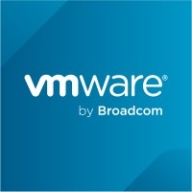

Microsoft Remote Desktop Services and VMware Fusion Pro are solutions competing in the remote access and virtualization space. Microsoft Remote Desktop Services offers superior centralized management and remote accessibility, while VMware Fusion Pro stands out for its versatility in virtual machine operations.
Features: Microsoft Remote Desktop Services supports independent and secure remote sessions with centralized management and easy software access. It performs well even with low bandwidth and integrates seamlessly with Windows. VMware Fusion Pro is known for smooth virtual machine operations on Macs, along with powerful snapshot and cloning capabilities, ensuring efficiency and seamless integration.
Room for Improvement: Microsoft Remote Desktop Services may experience network lag and dependency on VPNs, with challenges in automating application installations across RDS farms. VMware Fusion Pro needs enhancement in resource optimization and cloud-related features, alongside improving its command line interface and API interactions.
Ease of Deployment and Customer Service: Microsoft Remote Desktop Services offers flexible deployment options both on-premises and in the cloud, though it relies on strong network quality. Users report variability in support experiences. VMware Fusion Pro focuses mainly on-premises deployment with high reliability, leading to fewer support inquiries.
Pricing and ROI: Microsoft Remote Desktop Services employs a CAL licensing model, with potentially higher costs for user CALs but no charge for personal Windows use. The ROI varies. VMware Fusion Pro requires purchase but its pricing reflects the value provided by its features. Compared to Microsoft, VMware offers more predictable costs alongside its feature set.
| Product | Market Share (%) |
|---|---|
| VMware Fusion Pro | 13.7% |
| Microsoft Remote Desktop Services | 6.0% |
| Other | 80.3% |


| Company Size | Count |
|---|---|
| Small Business | 40 |
| Midsize Enterprise | 16 |
| Large Enterprise | 31 |
| Company Size | Count |
|---|---|
| Small Business | 2 |
| Midsize Enterprise | 6 |
| Large Enterprise | 4 |
Microsoft Remote Desktop Services is a highly regarded remote access tool in addition to being a top-ranked Virtual Desktop Infrastructure (VDI) solution in the marketplace today.
Microsoft Remote Desktop Services (RDS) is a suite of valuable elements of the Windows operating system (OS) that serve specific desired objectives. Microsoft RDS integrates various features that allow approved users to gain access to graphical desktops and Windows applications remotely. Approved users are able to deploy applications or even a complete desktop without having to install anything on their devices. Everything remains in the cloud. This ensures that there are never any compatibility issues and keeps the organization's original network secure at all times. Administrators are also able to ensure that data cannot be stored in any unapproved location, such as the local device, unapproved drives, or any other location.
Microsoft RDS makes it easy for business organizations to access Windows Desktops and other Windows applications remotely to ensure today’s busy enterprise organizations are able to maintain the highest levels of productivity at all times. There are two basic ways organizations can effectively utilize RDS.
Microsoft Remote Desktop Services Benefits
Microsoft Remote Desktop Services has many benefits. Some of its most valuable benefits include:
Microsoft Remote Desktop Services makes it easy for busy enterprise organizations to stay productive and remain competitive in today’s aggressive marketplace. An organization's end-users can be given access to their own specific desktops from any location, anytime, using any approved device. Additionally, users can access Microsoft applications without having an effect on their device's resource capacity or performance.
Reviews from Real Users
“What I found most valuable in Microsoft Remote Desktop Services is accessibility because the solution lets you take control of your computer remotely, and that's a good feature.” Pascal B., IT consultant at Secoptrial
“The most valuable features of Microsoft Remote Desktop Services are unification, central management, and accessibility.” Jan S. Solution Architect at a tech services company
“The most valuable features are that it is fast and cost-effective. I am not aware of a replacement currently on the market.” Ramon H. Director at Empaco
VMware Fusion Pro allows Mac users to run Windows virtual machines, leveraging its interface with Windows ESXi infrastructure. The platform is user-friendly, enabling efficient OS launches and providing snapshot and cloning capabilities for a stable experience.
VMware Fusion Pro empowers Mac users with robust virtualization capabilities, including the ability to run Windows VMs and interface seamlessly with Windows ESXi infrastructure. The platform is noted for its rapid custom VM construction and remote management through full VMware server systems. Despite its advantages, users indicate areas for improvement, particularly in snapshotting, backup processes, and resource demands. Compatibility with operating systems and integration with macOS are additional concerns, with enhancements in security, cloud functionality, and API interface desired. Installation complexity and command-line interface improvements are also highlighted by users.
What are the key features of VMware Fusion Pro?VMware Fusion Pro is widely implemented for running Windows on Mac, managing networking servers, and testing on Apple laptops. It is used by developers and system administrators for creating virtual environments, while users in industries such as networking and software development utilize it for building test machines, evaluating software, and managing ERP packages on IBM AS/400 systems. The solution is preferred for virtualization tasks in sectors requiring robust, reliable tools that support both Mac and Windows environments seamlessly, supporting script writing and general virtual machine management.
We monitor all Virtual Desktop Infrastructure (VDI) reviews to prevent fraudulent reviews and keep review quality high. We do not post reviews by company employees or direct competitors. We validate each review for authenticity via cross-reference with LinkedIn, and personal follow-up with the reviewer when necessary.